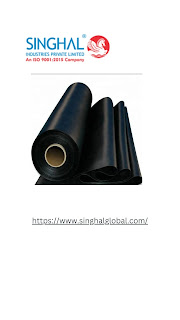Geomembrane sheets are essential components in various engineering and environmental applications, primarily used for containment, separation, and protection. These sheets are typically made from high-density polyethylene (HDPE), which provides excellent durability and resistance to environmental stressors. This article delves into the characteristics, applications, and suppliers of geomembrane sheets, focusing on HDPE geomembrane sheet and their manufacturers.
What is a Geomembrane Sheet?
A geomembrane sheet is a synthetic membrane liner or barrier used to control fluid or gas migration in a variety of applications. They are primarily made from flexible polymeric materials, with HDPE being the most common due to its robustness and impermeability. Geomembranes are widely utilized in landfills, ponds, reservoirs, and other structures requiring water or waste containment.
Properties of HDPE Geomembrane Sheets
HDPE geomembrane sheets are known for their exceptional properties:
Chemical Resistance: They resist degradation from chemicals, making them suitable for industrial applications.
UV Stability: HDPE geomembranes can withstand prolonged exposure to ultraviolet light without significant deterioration.
Flexibility: These sheets can be manufactured in various thicknesses (ranging from 0.5 mm to 3 mm), allowing for flexibility in application.
Durability: They have high tensile strength and puncture resistance, ensuring longevity even in harsh environments.
Applications of Geomembrane Sheets
Geomembranes serve multiple purposes across various industries:
Landfill Liners: Used to prevent leachate from contaminating groundwater.
Pond Liners: Essential for agricultural ponds to retain water and prevent seepage.
Reservoirs: Used to line reservoirs to minimize evaporation losses.
Wastewater Treatment: Employed in treatment facilities to contain wastewater and prevent leakage into the soil.
Mining Operations: Utilized in heap leaching processes to manage leachate.
Choosing the Right Geomembrane Supplier
When selecting Geomembrane suppliers, it is crucial to consider several factors:
Quality Assurance: Ensure that the supplier adheres to international quality standards.
Product Range: Look for suppliers who offer a wide variety of geomembranes in different thicknesses and materials.
Technical Support: A good supplier should provide technical assistance in selecting the appropriate product for your specific needs.
Leading Geomembrane Manufacturers
Several Geomembrane manufacturers have established themselves as leaders in the production of geomembrane sheets:
Shalimar Plastic Industries: Known for their high-quality HDPE geomembrane sheets, they offer products suitable for various applications including agriculture and industrial use.
JK Plastopack: This manufacturer provides a range of geomembranes tailored for agricultural ponds and aquaculture, emphasizing durability and UV resistance.
Megaplast: They specialize in innovative geomembranes with features like co-extruded layers for enhanced performance.
Advantages of Using HDPE Geomembrane Sheets
The benefits of utilizing HDPE geomembrane sheets are numerous:
Cost-Effectiveness: Their durability reduces the need for frequent replacements, leading to lower long-term costs.
Environmental Protection: By preventing contamination of soil and groundwater, these sheets play a vital role in environmental conservation.
Versatility: They can be used in various applications across different sectors, making them a versatile solution.
Installation Considerations
Proper installation of geomembrane sheets is critical to ensure their effectiveness:
Site Preparation: The area should be cleared of sharp objects that could puncture the membrane.
Seaming Techniques: Various seaming methods (e.g., thermal welding) should be employed to ensure watertight integrity.
Inspection: Post-installation inspections are necessary to identify any potential leaks or damages.
Environmental Impact
The use of geomembranes contributes positively to environmental management by:
Reducing water loss through evaporation in agricultural settings.
Preventing soil contamination from industrial waste.
Enhancing the efficiency of water storage systems.
Conclusion
Geomembrane sheets play a crucial role in modern engineering solutions across various industries. Their versatility, combined with the strength and durability of HDPE materials, makes them an ideal choice for containment applications. By selecting reputable geomembrane suppliers and manufacturers, businesses can ensure they receive high-quality products that meet their specific needs while contributing positively to environmental sustainability.
Frequently Asked Questions (FAQs)
What thickness should I choose for my HDPE geomembrane sheet?
The thickness of HDPE geomembrane sheets typically ranges from 0.5 mm to 3 mm. The choice depends on the specific application; thicker sheets are generally recommended for more demanding environments such as landfills or mining operations.
How long do HDPE geomembrane sheets last?
With proper installation and maintenance, HDPE geomembranes can last over 20 years. Their longevity is influenced by factors such as UV exposure, chemical interactions, and mechanical stress.
Can geomembranes be repaired if damaged?
Yes, most types of geomembranes can be repaired using patches made from compatible materials. It is essential to follow manufacturer guidelines for repair techniques to ensure the integrity of the liner is maintained.

Comments
Post a Comment